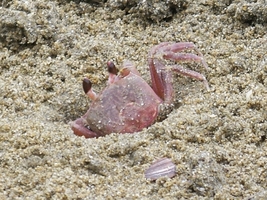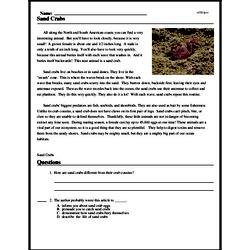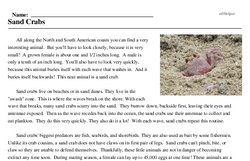Sand Crabs
All along the North and South American coasts you can find a very interesting animal. But you'll have to look closely, because it is very small! A grown female is about one and 1/2 inches long. A male is only a tenth of an inch long. You'll also have to look very quickly, because this animal buries itself with each wave that washes in. And it buries itself backwards! This neat animal is a sand crab.
Sand crabs live on beaches or in sand dunes. They live in the "swash" zone. This is where the waves break on the shore. With each wave that breaks, many sand crabs scurry into the sand. They burrow down, backside first, leaving their eyes and antennae exposed. Then as the wave recedes back into the ocean, the sand crabs use their antennae to collect and eat plankton. They do this very quickly. They also do it a lot! With each wave, sand crabs repeat this routine.
Sand crabs' biggest predators are fish, seabirds, and shorebirds. They are also used as bait by some .....




